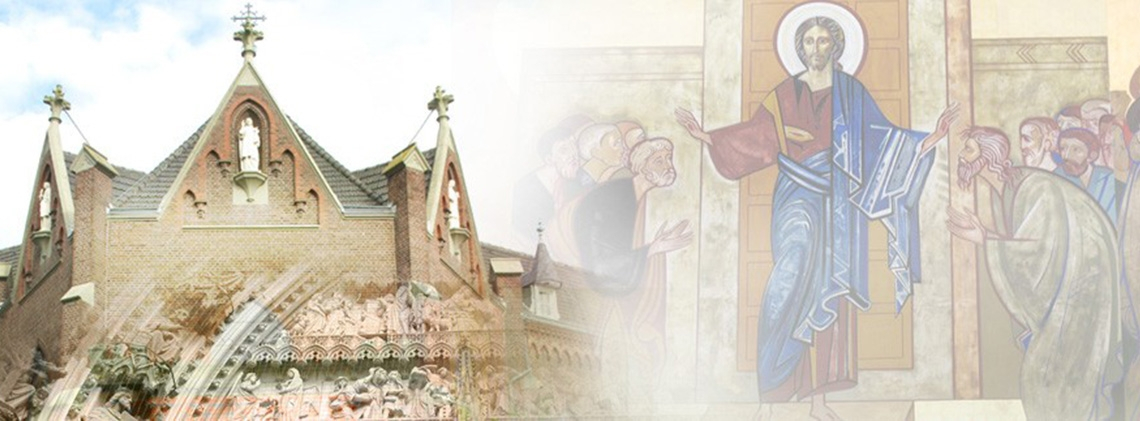
Christianity in China
Splendid
Chi Culture
Topic
Christianity in China
Christianity is the largest religion in the world today, and its believers make up about thirty percent of the world’s population. Christianity together with Islam and Buddhism are collectively called the three major religions.
The spread of Christianity to China can be traced back to the Tang dynasty (618–907). Over a history of more than a thousand years, the Christian faith has been a vehicle of new knowledge and viewpoints that profoundly influenced Chinese society. From the eighteenth century on, eastward diffusion of Western learning broadened intellectual horizons of the Chinese, making them conversant with fields such as medicine, astronomy, geography, and technology. In another respect, the faith served as a bridge, as missionaries to China introduced Chinese culture to the West. Thus they helped to deepen mutual recognition and understanding, and they also helped to spread Chinese culture.
Christianity in the form of Nestorianism was present in China during the Tang dynasty, after which it disappeared for a time for political reasons. During the Ming dynasty (1368–1644), Catholicism was once again introduced along with the opening of new marine routes and Western colonial activity in Asia. In the early Qing dynasty (mid-seventeenth century), the court approved the dissemination of Catholicism in China. However, due to contradictions and conflicts between the Catholic Church and Chinese political culture, the Qing (1644–1911) court eventually banned Catholicism. After the Opium War, China became a semi-colonial country: the Qing court was forced to cancel the ban, allowing the Christian faith to spread in China, and promoting freedom of belief. After anti-Christian movements at the turn of the twentieth century, subsequent, development of Christianity was fairly steady in the Republic of China period (1912–1949), except for the period of warlordism in the 1920s.
After the New China was established in 1949, Christian churches entered a stage of adjustment to meet the new era’s demands. What is more, small groups of Christian believers chose to hold prayers or masses in private homes or special locations. Such a practice continues even today.
In the centuries since Christianity was introduced in China, a number of missionaries have been especially influential, including the Catholic missionaries Matteo Ricci (1552–1610), Johann Adam Schall von Bell (1591–1666), Ferdinand Verbiest (1623–1688), and Francois Xavier (1506–1552). Outstanding Protestant missionaries included Robert Morrison (1782–1834), Elijah Coleman Bridgman (1801–1861), Peter Parker (1804–1888), and Young John Allen (1836–1907). In addition to preaching Christianity in China, they also brought Western science, astronomy, medicine, geography, and cultural knowledge to China.
After the introduction of Christianity, many influential adherents embraced the faith, such as Xu Guangqi (alt. Hsü Kuang-ch’i,1562–1633), Li Zhizao (alt. Li Chih-tao, 1565–1630), Luo Wenzao (alt. Lo Wen-Tsao, 1616–1691), Liang Fa (alt. Leung Faat, 1789–1855), and Wu Leichuan (1870–1944). By actively promoting the faith’s development in society and in their personal spheres, they became indispensable figures in the development of Christianity in China.
However, cultural diffusion also created controversy along the way. In the course of proselytization, disputes such as the “Chinese Rites” controversy arose, and government authorities took exception to some practices, leading to the imperial ban on preaching which lasted until the mid-Qing. This was a major event in ecclesiastical history.
Across the vast Chinese landscape, Christian denominations established numerous churches and places of worship to disseminate their faith. For example, the Catholic church created many archdioceses, parishes, and apostolic prefects in China. The Cathedral of the Immaculate Conception in Beijing (a.k.a. Xuanwumen Catholic Church or Southern Church) is the oldest Catholic church in Beijing; the Gothic style Sacred Heart Cathedral (a.k.a. the Cathedral of the Sacred Heart of Jesus, or Shishi Catholic Church) houses the Catholic archdiocese in Guangzhou; Xujiahui (Zikawei) Cathedral (a.k.a. St. Ignatius Cathedral) in Shanghai was the former residence of Xu Guangqi (1562–1633), a high-level court official in the late Ming dynasty. Christians also established St. Paul’s Church in Nanjing, which was the first formal Episcopal church in Nanjing. Chinese followers regard these churches as sacred places.



